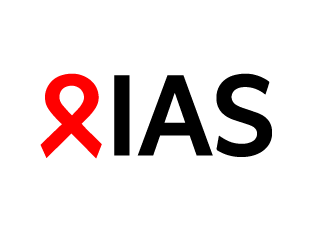Thank you for your interest in CCO content. As a guest, please complete the following information fields. These data help ensure our continued delivery of impactful education.
Become a member (or login)? Member benefits include accreditation certificates, downloadable slides, and decision support tools.

Professor of Medicine
University Hospital Bonn
Department of Medicine I
Bonn, Germany
Jürgen K Rockstroh, MD: consultant/advisor/speaker: Abivax, Boehringer, Galapagos, Gilead, Janssen, Merck, Theratechnologies, Viiv.
Key Takeaways
In most developed countries, the prevalence of chronic hepatitis B virus (HBV) infection is <1%, and infection is acquired during adulthood mainly due to sexual and parenteral causes. The risk of acquiring HBV infection in persons with HIV (PWH) is increased by 40% compared with those who do not have HIV.
The guidelines of the European AIDS Clinical Society(EACS) guidelines recommend that all PWH with HBV/HIV coinfection should receive antiretroviral therapy (ART) that includes tenofovir disoproxil fumarate (TDF) or tenofovir alafenamide (TAF) unless a history of tenofovir intolerance exists, but there are currently no data to suggest that one should be favored over the other. Treatment is crucial because PWH who become infected with HBV are 6 times more likely to develop chronic hepatitis B, most likely because of HIV-associated immunodeficiency.
Of interest, after starting ART and achieving immune restoration, higher hepatitis B surface (HBs) and hepatitis B e antigen (HBeAg) seroconversion rates (up to 18%) have been reported in HIV/HBV coinfection after more than a decade of tenofovir-based therapy. By contrast, HBs- and/or HBeAg seroconversion rates in HBV monoinfection in persons receiving tenofovir—even after extended treatment periods—is much lower.
BIC/FTC/TAF and DTG + FTC/TDF in HBV and HIV Coinfection
At the recent International AIDS Conference in Montreal—our first in-person meeting since 2019—the first randomized study of TDF vs TAF in treatment-naive individuals coinfected with HIV and HBV was presented. This phase III study compared bictegravir (BIC)/emtricitabine (FTC)/TAF vs dolutegravir (DTG) + TDF/FTC in 243 participants initiating treatment for both viruses. The Week 48 primary endpoint results were reported at this meeting.
Participants from 11 countries in Asia, Europe, North, and Latin America were included in the study. Approximately 30% HIV-1 RNA >100,000 c/mL and approximately 40% had a CD4+ cell count <200 cells/mm³ at baseline. Median HBV DNA was 8.1 log10 IU/mL, and 78% were HBeAg positive.
Effect on HIV
For effect on HIV, at Week 48, noninferiority regarding DTG + TDF/FTC was demonstrated for virological efficacy with BIC/FTC/TAF. The percentage of participants with HIV-1 RNA <50 copies/mL was 95.0% with BIC/FTC/TAF and 91.0% with DTG + FTC/TDF (P = .21). The high HIV suppression at 1 year on both of these regimens is well in line with larger phase III trials in persons with HIV monoinfection.
Effect on HBV
Of more interest, however, was that a statistically significantly larger percentage of the BIC/FTC/TAF group than the DTG + FTC/TDF group had HBV DNA <29 IU/mL (63.0% vs 43.4%, respectively) at Week 48, even though the actual decline in HBV DNA was similar between the 2 treatment arms. Moreover, by Week 48, a higher percentage of persons randomized to BIC/FTC/TAF vs DTG + FTC/TDF had HBs antigen (HBsAg) loss (12.6% vs 5.8%), HBsAg seroconversion (8.4% vs 3.3%), HBeAg loss in persons positive for HBeAg at baseline (25.6% vs 14.4%), and HBeAg seroconversion (23.3% vs 11.3%)—although of these parameters, the only result that was statistically significant at Week 48 was HBeAg seroconversion. Those receiving BIC/FTC/TAF were also numerically, but not statistically significantly, more likely than those receiving DTG + FTC/TDF to have achieved normalization of alanine aminotransferase by the American Association for the Study of Liver Disease’s criteria (73.3% vs 55.3%).
My Interpretation and Impact on My Practice
What can we make of these results? Other larger trials that compared TDF with TAF in HBV monoinfection were unable to detect any differences between the 2 HBV therapies regarding HBV suppression or HBsAg or HBeAg seroconversion. As HBeAg and HBsAg seroconversion occurs more frequently in people living with HIV coinfection, the question arises whether in the current study, there might have been differences in baseline characteristics that affect HBV seroconversion rates.
Indeed, in the TDF group, there were numerically more individuals with higher baseline HBV DNA levels. In addition, there was a numerically higher proportion of individuals with a CD4 count <200/mm³ in the TDF group (52 [43%]) vs the TAF group (46 [38%]). We know that that these 2 criteria have been associated with decreased probability of achieving seroconversion.
In addition, interpretation may be difficult because quantitative HBsAg levels (predictive for HBsAg loss) were not provided for either group. More subanalyses and longer follow-up data are warranted to see whether these results persist over time.
Finally, HBV DNA decline up to Week 48 did not differ between the 2 groups, suggesting to me that differences in antiviral potency are unlikely.
At this point, no change in HBV treatment guidelines is to be expected before more follow-up data have been collected. Therefore, in my own clinical practice, I will continue to use TDF or TAF as part of my treatment of HIV/HBV coinfection, since decline in HBV DNA was similar between both treatment options. I expect that, for both TDF and TAF, the rates of HBV DNA suppression will increase over time: With high initial HBV viremia, it can take extended treatment periods before achieving complete suppression of HBV replication. As such, I expect that any initial differences between HBV suppression rates or HBeAg loss may disappear over time.
Your Thoughts?
What do you make of these data? What do you think explains the trends in HBsAg and HBeAg seroconversion rates? Will you change your practice regarding initiating ART in your patients with HBV/HIV coinfection? Join the conversation by posting your comments.

Contact Clinical Care Options
For customer support please email: customersupport@cealliance.com
Mailing Address
Clinical Care Options, LLC
12001 Sunrise Valley Drive
Suite 300
Reston, VA 20191

You are now leaving the CCO site. The new destination site may have different terms of use and privacy policy.